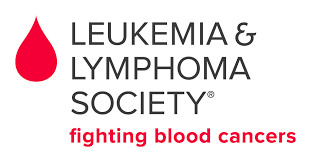Doctors use several types of approaches and treatment combinations for ALL, including:
- Chemotherapy
- Stem cell transplantation
- Ph-positive ALL therapy
- Clinical trials
Because of ALL grows rapidly, most patients need to start chemotherapy soon after diagnosis. During chemotherapy, you will be given potent drugs that must be toxic enough to damage or kill leukemic cells. At the same time, these drugs impact normal cells and can cause side effects.
Acute lymphoblastic leukemia chemotherapy treatment is generally done in two parts, induction therapy and post-remission therapy.
The first phase of treatment is induction therapy, where the goal is to induce remission (no evidence of disease). Induction therapy attempts to kill as many ALL cells as possible, get blood cell counts back to normal and get rid of all signs of the disease for an extended time. Induction therapy is usually completed over four to six weeks. You will likely spend most of that time in the hospital. You may have to go through several rounds of induction therapy before all of the ALL cells are destroyed.
Minimal Residual DiseaseSome people with ALL have a very low level of remaining ALL cells after treatment. This is called minimal residual disease (MRD). Sensitive molecular techniques permit the identification of small amounts of residual leukemia cells at times when blood and marrow appear normal. Your doctor may consider giving you additional treatment if MRD is detected at the end of your induction therapy.
After you finish induction therapy and are in remission, you'll begin the second phase of treatment, called post-remission therapy (consolidation and maintenance therapy). Without this second step, your cancer is likely to return.
Consolidation therapy is usually given in cycles for four to six months. You'll likely continue to receive therapy for two to three years. Maintenance therapy is usually given for about two years and its purpose is to destroy any stray ALL cells that blood or marrow tests can't detect. Maintenance may include one or two intensified treatments and are referred to as “re-induction” or “delayed intensification”.
Some factors your doctor considers when deciding the type of post-remission therapy you'll need include:
- Whether induction therapy killed your ALL cells
- Your ability to tolerate intensive treatment
- Cytogenetic findings and whether they reveal certain changes to your chromosomes
- The availability of a stem cell donor
Some types of ALL, such as T-cell ALL, infant ALL and adult ALL, are usually treated with higher doses of drugs during induction consolidation and maintenance therapy.
Cancer cells often collect in the lining of the spinal canal or brain (the meninges) in patients with ALL. This results in central nervous system leukemia, which causes headache, nausea, vomiting and blurred vision. Even if cancerous cells aren't detected once you're in remission, you must still undergo central nervous system prophylaxis, as the majority of patients will develop CNS leukemia if not treated.
Intrathecal therapy is used to kill ALL cells in the central nervous system. During this procedure, chemotherapy drugs are delivered directly into your spinal canal.
When you undergo intrathecal therapy, your doctor performs a lumbar puncture (spinal tap) by inserting a needle into your spinal canal. Your doctor will remove spinal fluid, which is examined for leukemic cells, and inject fluid containing chemotherapy drugs or hydrocortisone.
Because the drugs go directly into your spinal canal, the therapy treats hard-to-reach spine and brain cells more effectively than injecting chemotherapy into a vein. In some cases, radiation therapy to the spine or brain may be used.
For your post-remission therapy, your doctor may recommend high-dose chemotherapy followed by stem cell transplantation (bone marrow transplant). Although it's not the only type of stem cell transplantation, an allogeneic stem cell transplant is the most common type used to treat ALL. A reduced-intensity allogeneic stem cell transplant may also be used. An autologous stem cell transplant uses one’s own cells but is not commonly used to treat ALL.
Your doctor’s recommendation for a stem cell transplant, as well as the timing of the transplant, is based on many considerations; these include whether you have high-risk ALL or standard-risk ALL, the availability of a suitable donor, and how your ALL has responded to chemotherapy.
Allogeneic Stem Cell TransplantationAllogeneic stem cell transplantation involves transferring stem cells from a healthy person (the donor) to the patient. The procedure follows high-intensity chemotherapy, which administers potent drugs that must be toxic enough to kill leukemic cells. Unfortunately, the chemotherapy also kills the normal stem cells in the bone marrow.
The reason for transferring stem cells from the donor is to give you the ability to start making a new supply of red cells, white cells and platelets to replace those that were destroyed by the strong doses of chemotherapy needed to kill the ALL cells. The decision to do a stem cell transplant depends on the availability of a suitable donor, your overall health, your response to drug therapy and your understanding of the transplant’s benefits and risks.
About one in five adults with ALL and a small number of children with ALL have a type of the disease categorized as Ph-positive. Patients with Ph-positive ALL have a chromosome abnormality that results in a gene mutation (change) called BCR-ABL. To treat the Philadelphia-positive (Ph-positive) subtype of ALL, doctors usually combine multidrug chemotherapy with another oral drug therapy (pills taken by mouth) that blocks the leukemia-causing effects of BCR-ABL.
To learn more, visit The Leukemia and Lymphoma Society.
 Content provided by:
Content provided by: